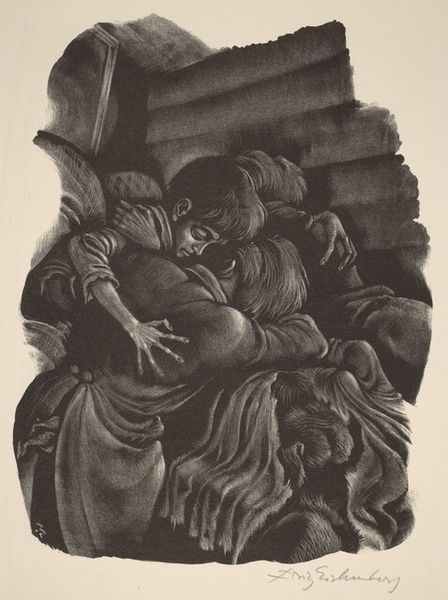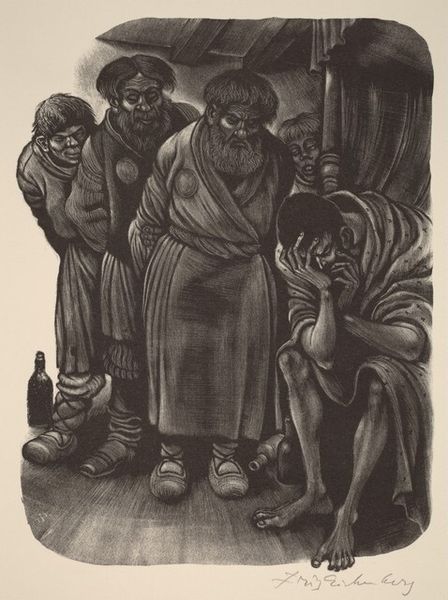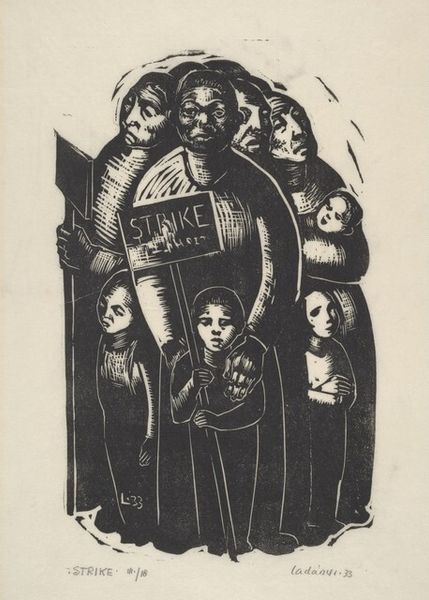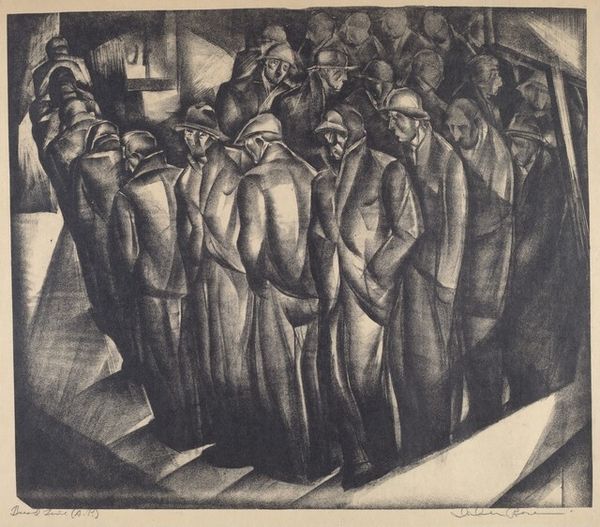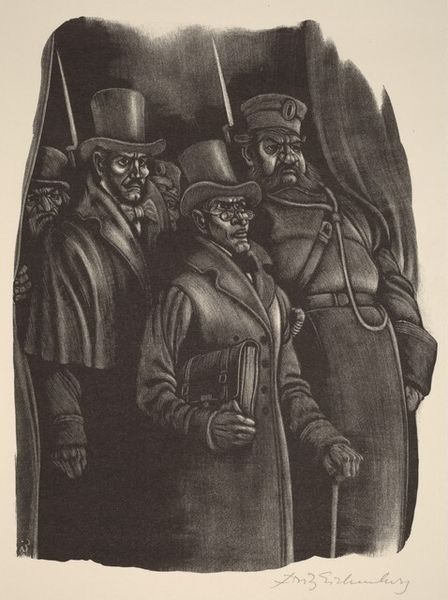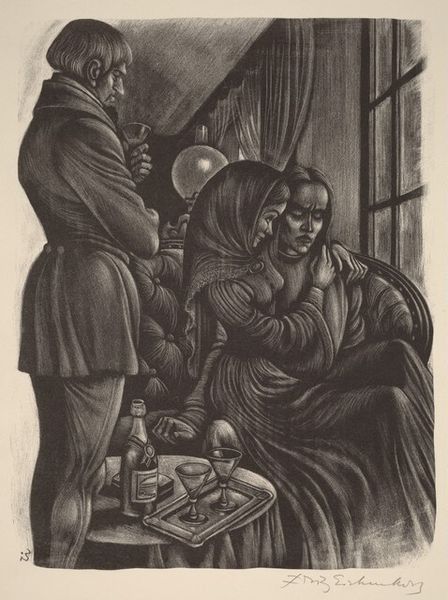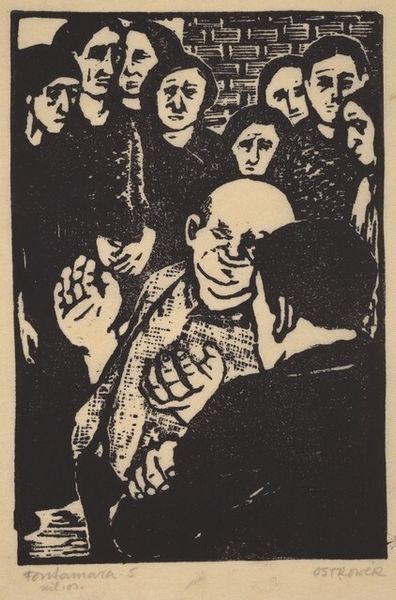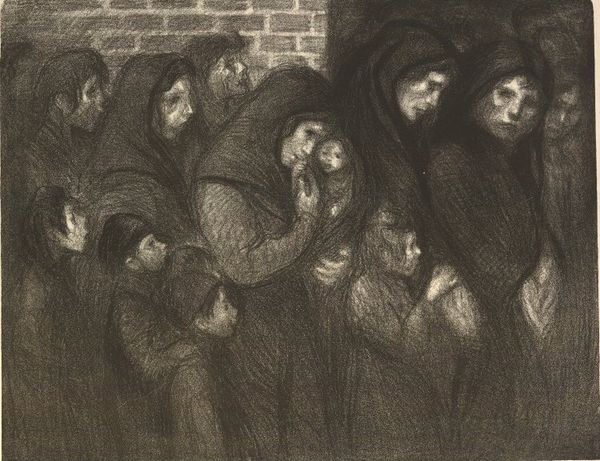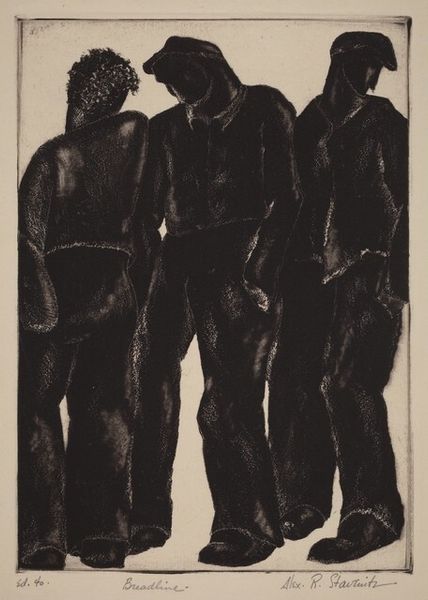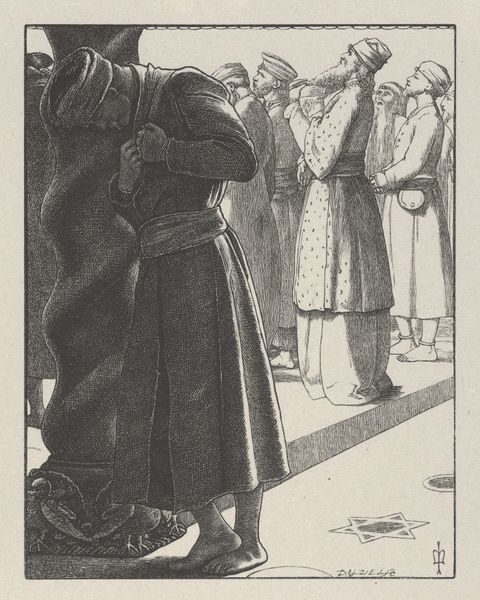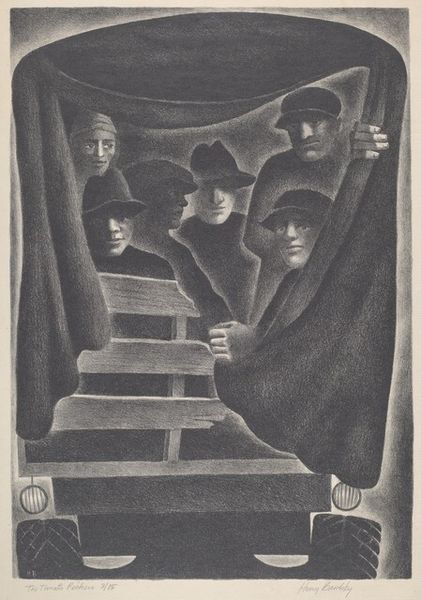
drawing, print
#
drawing
# print
#
figuration
#
group-portraits
#
modernism
#
realism
Copyright: National Gallery of Art: CC0 1.0
Editor: So, this is Fritz Eichenberg’s 1949 print, "Hurrah for Karamazov!". The huddle of figures creates this really striking density. I'm curious about the image's public message – what do you see here? Curator: It's fascinating how Eichenberg chooses to visualize Dostoevsky's themes through such a tightly-knit group portrait. It makes me wonder about the political and social context of the post-war period. Does this communal huddle signify solidarity, perhaps in response to the individualistic anxieties of the time? Editor: That's interesting – I hadn't considered it in that way. Curator: Think about the title. "Hurrah for Karamazov!" suggests a celebratory affirmation of Dostoevsky's complex characters. Could Eichenberg be positioning the novel as a counter-narrative to the dominant ideologies of the era? A reminder of human fallibility and moral ambiguity? Editor: So, it’s not just illustrating the novel, but commenting on its enduring relevance, and maybe even suggesting an alternative to the social norms of the time? Curator: Exactly. What do you notice about their expressions? Editor: Some seem joyous, others pensive, even a bit apprehensive. Curator: Precisely. Eichenberg captures the range of human emotions and experiences. The question then becomes: How does a work like this function in a society still grappling with the aftermath of global conflict? How does its reception shift over time as new generations encounter it? Editor: That really reframes how I see this work; it’s less about the figures themselves, and more about what they represent in the bigger social picture. Curator: Indeed. It prompts us to consider art as a vital site of public discourse and meaning-making. Editor: I appreciate the new perspective and your attention to the context of art. Thanks!
Comments
No comments
Be the first to comment and join the conversation on the ultimate creative platform.

